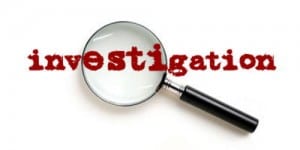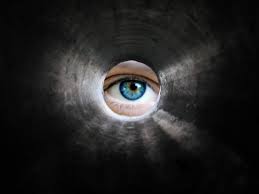 I recently read an investigation report where a firefighter died and it made me sad. First, as we see so often in after action reviews, it appears as though the tragedy may have been preventable. The second thing that made me sad about this investigation report was the inaccurate and incomplete recommendations about situational awareness. I don’t fault the investigators or the writers of the report. However, it shows that even our best and brightest have room for improving their understanding of situational awareness.
I recently read an investigation report where a firefighter died and it made me sad. First, as we see so often in after action reviews, it appears as though the tragedy may have been preventable. The second thing that made me sad about this investigation report was the inaccurate and incomplete recommendations about situational awareness. I don’t fault the investigators or the writers of the report. However, it shows that even our best and brightest have room for improving their understanding of situational awareness.
From the report
Here are a few statements contained in this investigative report, followed by a few of my observations. This is not an effort to be critical of the authors. And, to be fair, I reached out to the authors and offered my assistance in strengthening the situational awareness lessons in their future reports.
It’s important for the readers of these reports to have a broader perspective about how to improve situational awareness and to have information that is factual.
Statement: “One of the most critical aspects of coordination between crews is maintaining situational awareness.”
 SAMatters: This is accurate. However, there are multiple awarenesses for responders to maintain at an incident scene, including: Personnel, team, environment, resources and broad-picture. This statement addresses team SA which is important, but only one component.
SAMatters: This is accurate. However, there are multiple awarenesses for responders to maintain at an incident scene, including: Personnel, team, environment, resources and broad-picture. This statement addresses team SA which is important, but only one component.
Statement: “The opposite of situational awareness is tunnel vision where the fire fighters become so focused on fire-fighting or other operational assignments that they fail to sense changes in their environment.”
SAMatters: This is not accurate. The opposite of situational awareness is flawed perceptions of reality or cognitive confusion. What the authors of this report defined as tunnel vision is not tunnel vision at all. It is task fixation. Tunnel vision is a stress-induced neurological phenomenon where chemicals, hormones and neurotransmitters cause a biological narrowing of the visual field.
Statement: “Fire fighters can maintain their situational awareness by looking up, down, and around themselves as well as listening for new or unusual sounds and feeling vibrations or movement.”
SAMatters: This is partially accurate. What the authors describe is the first step in the formation of situational awareness – perception of clues and cues in the environment. However, there are two additional components of situational awareness development not addressed in the recommendation – comprehension and prediction. Simply because a person “pays attention” or “keeps their head on a swivel” or “looks up, down and all around” does not mean they will develop or maintain strong situational awareness. It could be said that a person who does this will likely have a stronger perception of clues and cues present in their environment.
Statement: “Fire fighters need to understand the importance of situational awareness, personal safety, and personal accountability at the incident scene.”
SAMatters: This is accurate. Intuitively, most first responders understand that situational awareness is important. This is very different, however, from understanding HOW to develop situational awareness or all the ways situational awareness can be lost, or how to get your situational awareness back once it has been lost.
 Statement: “Essentials of Fire Fighting and Fire Department Operations defines situational awareness as an awareness of the immediate surroundings.”
Statement: “Essentials of Fire Fighting and Fire Department Operations defines situational awareness as an awareness of the immediate surroundings.”
SAMatters: This is an accurate quote from the book. But what does this definition really tell us about situational awareness? For, so long as we have an awareness of our surroundings, we have situational awareness. This is simply not true and it can be demonstrated quite easily with a multitude of exercises and through the documented live experiences of near-miss survivors. In almost every instance where I have personally interviewed a near-miss survivor, he or she told me that, in the moment, they thought they had a strong awareness of their surroundings. Where in fact, they didn’t.
Statement: “On the fire ground, every fire fighter should be trained to be constantly alert for changing and unsafe conditions. Even though a safety officer may have been designated for the incident, all personnel are obligated to remain alert to their immediate surroundings.”
SAMatters: This is good advice. No firefighter should ever relegate their situational awareness to anyone else. I once had a firefighter tell me he doesn’t worry about developing and maintaining situational awareness because that’s the job of his officer. That’s a dangerous mindset. Developing and maintaining strong SA is everyone’s responsibility.
Statement: “They must maintain their situational awareness and be alert for unsafe conditions.”
SAMatters: This is good advice as well. However, maintaining situational awareness is not an automatic skill set. It requires training. Unsafe conditions don’t always reveal themselves in blatant ways. Some of the clues and indicators can seem quite benign and unassuming. Helping responders become better at seeing, hearing, or feeling unsafe conditions helps with developing perception. Then, it’s a matter of getting perception to understanding… and understanding to prediction. This is no easy task, especially under stress, with changing conditions and time compression.
Dr. Gasaway’s Advice
 There is room for improvement. One of the best ways for us to learn from tragedies is to ask the right questions that get us to a higher level of understanding about what the responders were focused on at the moment things went wrong. Some of those questions might include:
There is room for improvement. One of the best ways for us to learn from tragedies is to ask the right questions that get us to a higher level of understanding about what the responders were focused on at the moment things went wrong. Some of those questions might include:
- What was the crew focused on at the time things went wrong?
- What was the mission of the crew at the time things went wrong?
- Were there clues and cues indicating the presence of the grave danger?
- Did the crew members see/hear these clues and cues?
- If they did see/hear them, did they understand the meaning of them?
- If they did see/hear and understand the clues and cues, did they choose to ignore them and, if so, why?
- Were crew members adequately trained on how to develop and maintain situational awareness in a high stress environment?
- What environmental factors may have contributed to the erosion of situational awareness?
- What information was available that may have tipped the responders to the potential outcome? Did they have access to the information? Did they understand the meaning of the information?
Questions like these provide a different perspective and dig deeper into understanding mindset, mission and focus and help uncover barriers to situational awareness.
Never be satisfied with the explanation that someone had a bad outcome (or a near miss) because they lost their situational awareness. Flawed situational awareness is a symptom. Barriers that flaw situational awareness reveal the root cause.
Action Items
 When evaluating a casualty event or a near miss event, dig deep and try to understand the barriers that may have flawed situational awareness.
When evaluating a casualty event or a near miss event, dig deep and try to understand the barriers that may have flawed situational awareness.- It’s rare for a responder to realize they are losing their situational awareness at the time it is happening, so seek to understand WHY they could not see the bad things coming.
- Avoid being a judge of others. A judging mind is not a learning mind. Put yourself in the shoes or boots of the responders who were operating in the moment and try to see how things looked for them just before things went wrong.
_____________________________________________________

If you are interested in taking your understanding of situational awareness and high-risk decision making to a higher level, check out the Situational Awareness Matters Online Academy.
CLICK HERE for details, enrollment options and pricing.
__________________________________
Share your comments on this article in the “Leave a Reply” box below. If you want to send me incident pictures, videos or have an idea you’d like me to research and write about, contact me. I really enjoy getting feedback and supportive messages from fellow first responders. It gives me the energy to work harder for you.
Thanks,

Email: Support@RichGasaway.com
Phone: 612-548-4424
SAMatters Online Academy
Facebook Fan Page: www.facebook.com/SAMatters
Twitter: @SAMatters
LinkedIn: Rich Gasaway
Instagram: sa_matters
YouTube: SAMattersTV
iTunes: SAMatters Radio
iHeart Radio: SAMatters Radio

Great article Chief. As someone who has worked on multiple firefighter injury investigations, I am always looking to be a better investigator. Your list of questions to ask is awesome. Each time I have been involved in a injury investigation, I look at the finished product and try to find ways to improve. I always find a question I wished I asked. I will be adding this list to my question list.
I have developed a class for injury investigators. I think we need to develop a program to provide training to fire service on conducting accident investigation.
Thank you Michael for sharing your feedback. I have a class for how to conduct facilitated debriefings but not accident investigations. I’d be up for a collaboration. ~ Rich